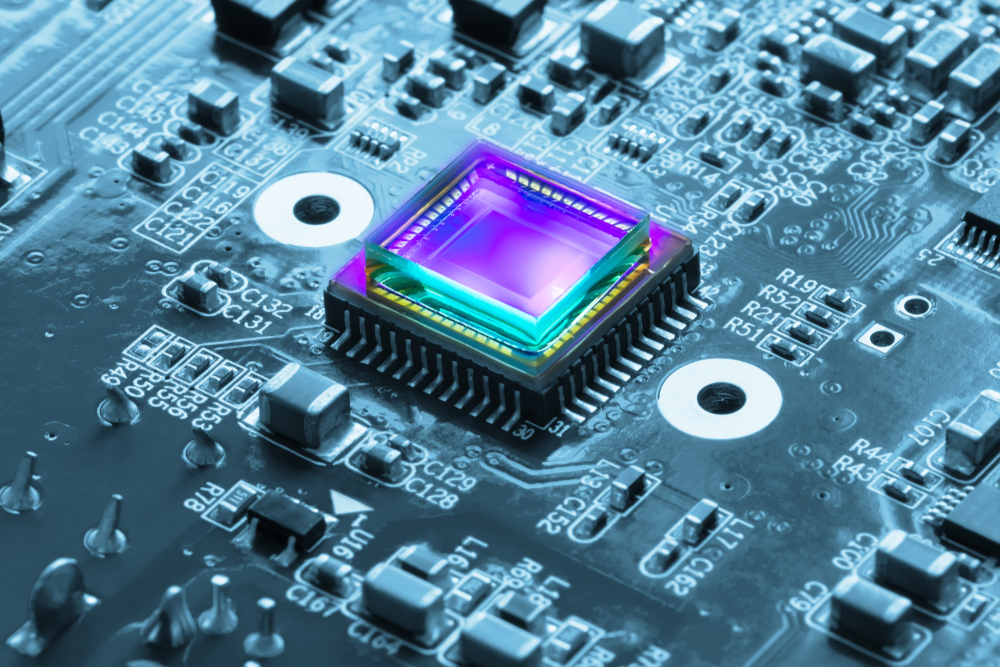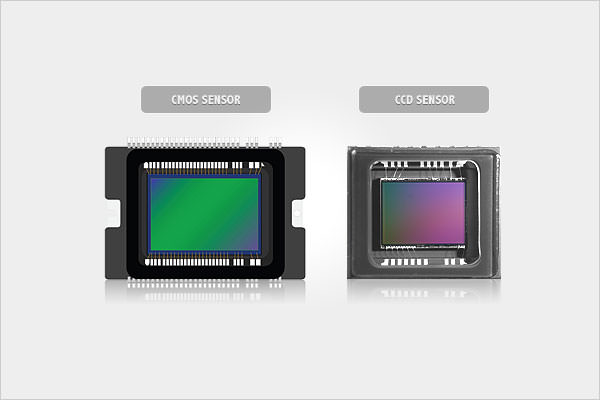Image sensors are made of a silicon surface embedded with multiple photosites. These photosites are sensitive to light—they absorb incoming light and convert it into electrical signals. With the help of a color filter array placed on top of the photosites, they are able to produce color images of the environment.
In simple terms, CCTV camera sensors are electronic components that capture light reflections from objects and convert them into electrical signals. These semiconductor-based sensors are among the most critical parts of surveillance cameras.
These sensors can only produce black and white images, because they are not sensitive to color. To generate a color image, three filters—green, red, and blue—must be placed over the image chip. By combining these primary colors side by side, a full-color image is created.
CCTV Camera Sensor Categories
Sensor Manufacturing Technology:
CCTV camera sensors are divided into two manufacturing categories: CCD or CMOS. Each of these sensors has its own specific characteristics.
Differences between CMOS Image Sensor and CCD Image Sensor:
The main difference between CMOS and CCD sensors is the way information is read.
In CMOS, the pixels themselves transfer light, whereas in CCD sensors, the pixels, after receiving light, bring it to the edge of the chip to be transferred from there.
Of course, another difference between these sensors is their light sensitivity. The CCD image sensor has higher light sensitivity than the CMOS image sensor and can provide better images in low light conditions.
Another difference between them is the image formation speed. The image formation speed is higher in CMOS sensors than in CCD. Therefore, for CCTV cameras with high frame rates, CMOS sensors are more suitable.
On the other hand, due to the higher number of electronic components used in it, CCD consumes more power, while the CMOS image sensor consumes less power and is more energy-efficient.
Currently, most CCTV cameras use CMOS, although in the past, CCD had better quality compared to CMOS.
If you are only looking for a CCTV camera with a CCD sensor, you would have to disregard all modern CCTV cameras and ignore the best brands and models of CCTV cameras.
Sensor size:
Most CCTV cameras have imaging sensors with dimensions from 1/2" to 1/4". In recent years, the average sensor size in CCTV cameras has increased. With the increase in resolutions to 3, 4, 5 megapixels, 4K, etc., image sensors larger than 1/3" have become more common.
Sensor Resolution:
Resolution, or definition, is an important feature of a chip. The unit used to measure resolution is pixels. The number of cells in the chip or sensor indicates its pixel count. The higher the number of these light-sensitive cells, the better and higher the quality of the received image.
Sensor Pixel Size:
Pixel size is measured in microns. Pixels are the physical openings for absorbing light, and these sizes vary in imaging sensors. If all other characteristics and components are the same, a larger pixel absorbs more light, resulting in a better image in low light conditions.
On the other hand, other factors can also affect the performance of a CCTV camera in low light.
Sensor Sensitivity to Light:
One of the important factors in sensor quality is its sensitivity to light. The less light the sensor requires, the higher its quality. The less light a chip needs, the fewer limitations it has and the better image quality it provides.
Sensor Dynamic Range:
Simply put, it means how much difference in light levels a sensor can capture. This is highly important because when you have two environments with completely different light levels, the darker environment will most likely appear black.
Example:
If you have a low-light environment like inside a warehouse, but the entrance to the warehouse is brightly lit, the environment inside the warehouse will appear completely black, and the brightly lit environment will appear completely white.





